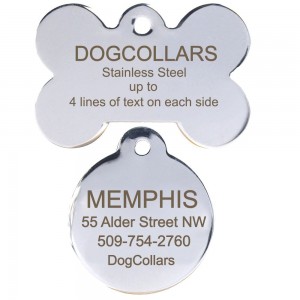Halloween can be a fun time for families, but it can be a potentially dangerous time for pets. Here are a few safety tips to make sure that your furry friends stay happy and healthy!
Halloween Candy
Remember: candy is people food!

- Chocolate can be extremely dangerous for dogs – symptoms of chocolate poisoning may include vomiting, diarrhea, rapid breathing, increased heart rate, and seizures.
- The artificial sweetner xylitol can also be dangerous for dogs – even small amounts of xylitol can cause a sudden drop in blood sugar and subsequent loss of coordination and seizures.
- Lollipops and their sticks can be choking hazards and cause painful obstruction.
- Candies wrapped in plastic and other types of wrapping can also lead to choking or cause an obstruction and upset stomach. Pets have an excellent sense of smell so keep all countertops clean and a lid firmly locked onto the garbage can to prevent them from eating wrappers and food packages.
- If you do suspect your pet has ingested something toxic, please call your veterinarian or the ASPCA Animal Poison Control Center at (888) 426-4435.
Costumes
Sure, they can be cute, but think safety first when dressing up your pets.
- Only put pets in a costume if they are comfortable.
- Don’t constrict pet’s movement, hearing, eyesight, ability to breathe or bark.
- Try on costumes before Halloween, so that if there are issues, you will know ahead of time.
- Avoid costumes with dangling or easily chewed-off pieces to prevent choking hazards.
- Ill-fitting outfits can get twisted on pet or external objects, leading to injury.
- Avoid tying anything around your pet’s neck to prevent choking or strangling.
- Don’t use streamers or ribbons around your pet’s neck, on their collars or costumes or in your home. These items are frequently ingested and may cause intestinal obstruction that could require surgery to remove.
- To minimize chances of an accident, add reflective tape to your pet’s costume if they will be out after dark.
- Never leave a pet unsupervised while wearing a costume
Decorations & People Costumes
When decorating and dressing up, make sure to think about keeping potentially dangerous items out of the reach of your pets.

- Pumpkins and decorative corn are relatively nontoxic, but they can produce stomach upset or intestinal blockage in pets who eat them.
- Exercise caution when using candles in carved pumpkins. Pets can easily knock a lit pumpkin over and cause a fire.
- Wires and cords from electric lights and other decorations should be kept out of reach of your pets.
- Keep glow sticks and glow jewelry away from your pets. Although the liquid in these products isn’t likely toxic, it tastes really bad and makes pets salivate excessively and act strangely.
Keep Pets Inside
Halloween is a classic time for pranks, and with lots of people out on the streets, keep your pets inside to ensure their safety.

- Pranksters have been known to tease, injure, and steal pets on Halloween night.
- If you have an outdoor cat (particularly a black cat), make sure to keep them indoors for several days around Halloween to minimize the risk from pranks or other cruelty-related incidents.
- Although tempting, do not bring your dog along for trick-or-treating. Even the best-trained dogs can become spooked or aggressive in the noise and confusion of Halloween. Children you encounter may also be fearful of dogs.
Answering the Door
With so many trick-or-treaters coming to the door,
it’s easy for pets to get loose.

- Dogs and cats can become skittish and anxious on Halloween due to the incessant ringing of the doorbell, noise, and the barrage of strangers dressed in unfamiliar and scary costumes. Decide if putting up a baby gate or leaving your dog or cat in a back room of the house would keep them calmer throughout the evening.
- All but the most social dogs and cats should be kept in a separate room away from the front door during peak trick-or-treating hours.
- When opening the door for trick-or-treaters, take care that your cat or dog doesn’t dart outside.
Pet Identification
Make sure your pet has ID tags and consider microchipping.

- Always make sure your dog or cat has proper identification. If your pet escapes or becomes lost, a collar and tags and/or a microchip will increase the chances that he or she will be returned to you.
- Make sure your pet’s tags are up to date!
- If you haven’t done so already, visit your veterinarian for a microchip prior to the festivities of Halloween.


